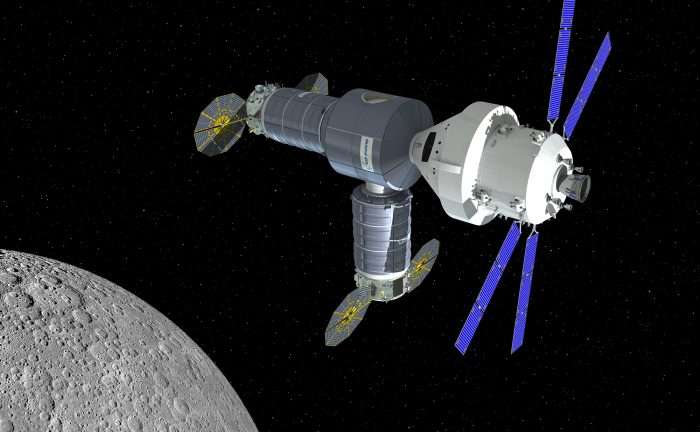
A lunar orbit habitat could provide a support base for astronauts to use while exploring the moon's surface
Orbital ATK, the American aerospace developer, has announced its intention to assemble a lunar outpost and have it orbiting the moon by 2020. The habitat, which would be two upgraded Cygnus pressurized vehicles, also known as Exploration Augmentation Modules (EAM) would be visited during the first manned mission of NASA’s new Space Launch System and Orion deep-space transportation system. That mission is known as Exploration Mission-2 (EM-2), and the lunar outpost could significantly increase what that mission is able to do. EM-2 is scheduled for 2021, providing sufficient funding is available.
Orbital ATK President of the Space Systems Group and former NASA astronaut Frank Culbertson announced the lunar-orbit outpost proposal at a U.S. House of Representatives Subcommittee on Space official hearing held Wednesday, May 18. He said, “A lunar-orbit habitat will extend America’s leadership in space to the cislunar domain.”
The plan is to assemble the crew-tended habitat based on a Cygnus-derived vehicle, and have it in place in lunar orbit by 2020. The lunar outpost would have pressurized work and living space for astronauts.
Orbital ATK was founded in 2015 by the merger of branches of Alliant Techsystems and Orbital Sciences Corporation. NASA directed them to develop the concept for an orbiting space platform that would orbit the moon and could eventually be upgraded into a research station.
The lunar outpost is part of NASA’s Next Space Technologies for Exploration Partnerships (NextSTEP) program. The program is meant to enhance cooperation between private space developers and NASA.
Orbital ATK believes that its Cygnus spacecraft could become part of the construction of a lunar space station, and that an orbiting lunar base could be part of human exploration missions to the moon and Mars. NASA is currently planning to send a human crew to Mars in the 2030s.
Image credit Orbital ATK

Leave a Reply